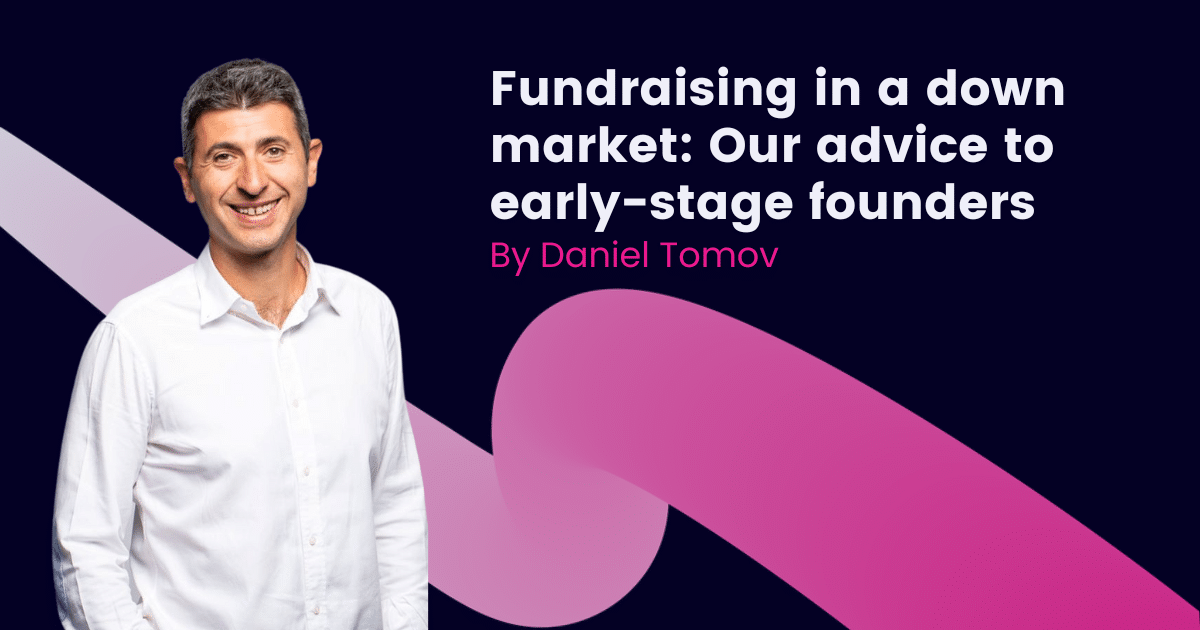Fundraising in a down market: Our advice to early-stage founders
by Daniel Tomov, Partner at Eleven Ventures. | Originally published on Eleven Ventures.

Guest post by Daniel Tomov, Partner at Eleven Ventures. | Originally published on Eleven Ventures.
The investment landscape for startups has undergone a seismic shift post-2021. For early-stage founders, understanding and adapting to these changes is not just a matter of choice, but a necessity for survival and growth. In this article, we delve into the key insights shared by our Partner, Daniel Tomov, aimed at helping you successfully navigate the challenging terrain of fundraising in a down market.
Understanding the shift in investment trends
The new reality: The days of easy funding and skyrocketing valuations are behind us, and investors are adopting a more conservative approach. This is affecting how startups should approach fundraising.
The change is exemplified by the decline in publicly listed tech company valuations, followed by privately held companies. Founders should anticipate more scrutiny and lower valuations than in previous years.
This shift results from market corrections and reduced investor enthusiasm. It’s crucial for startups to understand this change, in order to set realistic expectations for funding and valuation.
Investor’s dilemma and selectivity: Many investors are trapped in high-valuation investments made in the past. This has led to a more selective and risk-averse attitude towards new investments. Startups need to be aware of this mindset and prepare accordingly.
Many VCs have portfolios at high valuations now marked down, posing a risk of not providing good returns to their LPs.
This leads to investors being more cautious, focusing on potential big winners to compensate for past losses. Startups must demonstrate exceptional potential to attract investment in this environment.
Emphasis on product-market fit: In the current climate, proving a strong product-market fit is a key factor in attracting investment. Investors are looking for evidence that a product meets a significant market demand, and startups must demonstrate this effectively.
A startup with a strong product-market fit, even with a smaller client base, can be more appealing to investors than one with larger but less engaged clientele.
Showing a high retention rate and user engagement can be a compelling sign of product-market fit.
Regional differences in investment attitudes: Different geographical regions, such as the Middle East and Asia, may present different investment opportunities and attitudes compared to more traditional markets like Europe and the USA.
Diverse economic dynamics and investment strategies across regions mean startups should consider global investment opportunities.
Our advice to founders
✔️ Prepare for stringent investment terms.
Expect tougher terms, like 2x liquidation preferences, where investors ensure they recover their investment and possibly more before founders see returns. Understanding these terms helps startups avoid agreements that could be detrimental in the long term.
✔️ Aim for higher milestones for funding.
The current investment environment demands that startups achieve higher milestones for the same level of funding compared to past years. Where previously $1 million in ARR might have been sufficient for Series A, now $5 million might be the expectation. Understanding these heightened expectations helps startups set realistic goals and timelines for funding rounds.
✔️ Explore diverse investors.
Founders should also consider different types of investors suitable for their startup’s stage and sector and don’t limit their search to traditional venture capital. Family offices, angel investors, and government-funded programs might offer more favorable terms and longer investment horizons. It is important to understand that each investor type brings different advantages and expectations.
Step-by-step tips for effective fundraising
Research and identify suitable investors: Understand the focus areas and investment thesis of potential investors. This helps in tailoring your pitch and approach to align with their interests.
Engage with potential investors continuously: Foster ongoing relationships with investors, even outside of active fundraising periods. This helps in building trust and keeping your startup on their radar. Utilize your network to connect – personal recommendations can significantly enhance your credibility.
Craft a compelling pitch: Highlight your startup’s unique value proposition, market potential, and the problem it solves. A well-prepared pitch can make a significant difference.
Be open to feedback: Actively seek and be receptive to feedback and advice from potential investors. This can provide valuable insights into improving your business model or pitch.
Understand and negotiate terms: Gain clarity on investment terms and conditions. Be prepared to negotiate but also know when terms are too unfavorable.
Seek expert advice: Consult with legal and financial experts, especially for complex investment agreements. This can prevent future complications and ensure fair terms.
Plan for long-term goals: Align your startup’s objectives with your fundraising strategy. Consider how the investment will support your long-term vision.
Fundraising in a down market is undoubtedly challenging, but with the right strategies and mindset, it’s far from impossible. By understanding the current investment landscape, focusing on product-market fit, exploring diverse investment options, and engaging effectively with potential investors, founders can navigate these shifting sands. Remember, adaptability and strategic planning are your best allies in this journey.




